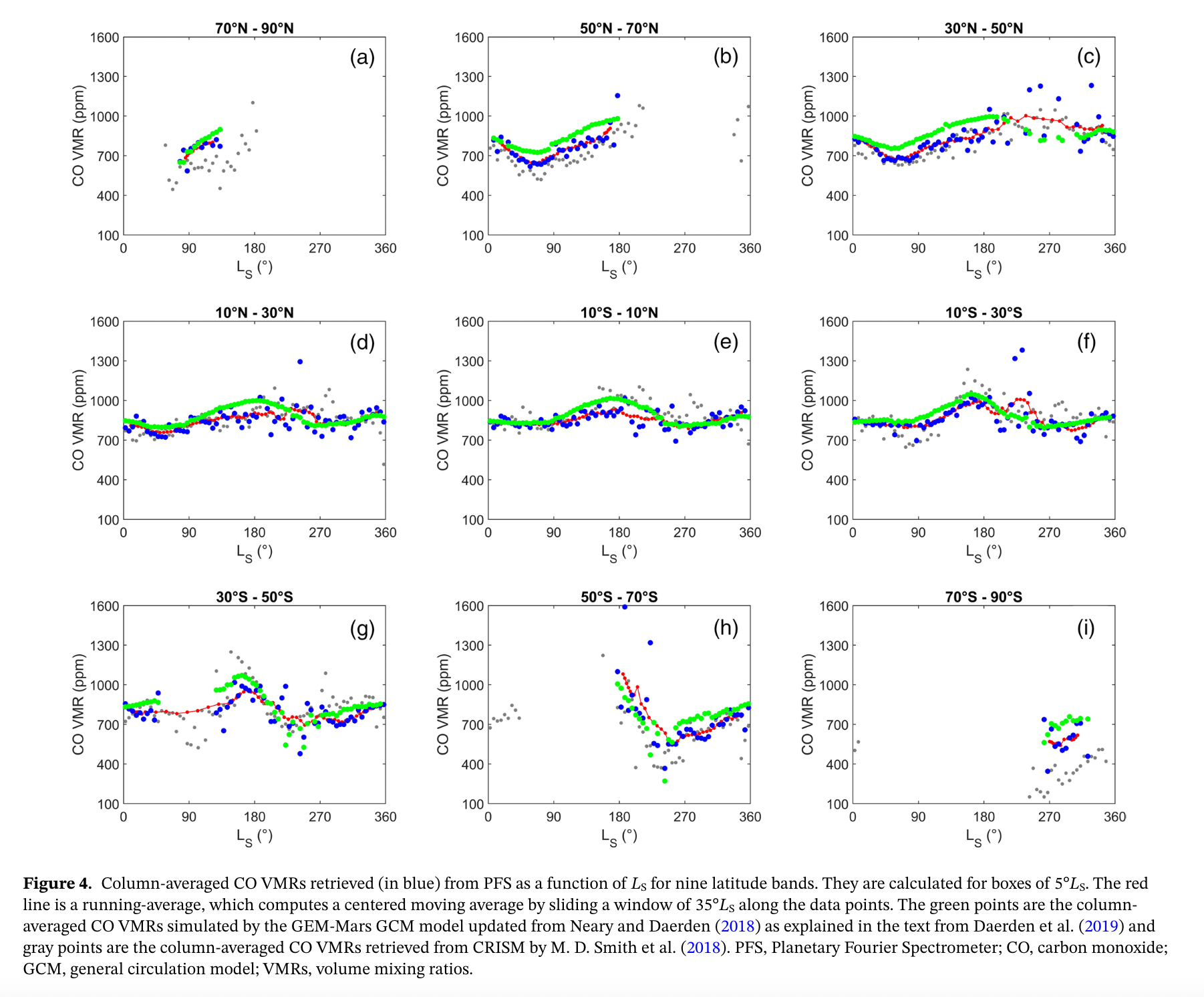Journal of Geophysical Research: Planets (2019) https://doi.org/10.1029/2020JE006480
Jimmy Bouche, Pierre-François Coheur, Marco Giuranna, Paulina Wolkenberg, Luca Nardi, Marilena Amoroso, Ann Carine Vandaele, Frank Daerden, Lori Neary, and Sophie Bauduin
A subset of more than 100,000 nadir measurements covering more than 7 Martian years (MY 26–MY 33) recorded in the thermal part of the Short Wavelength Channel (SWC) from the Planetary Fourier Spectrometer (PFS) on board Mars Express is exploited to investigate the global distribution and the seasonal cycle of carbon monoxide (CO) on Mars. The retrieval of CO vertical profiles is successfully achieved using a methodology based on the optimal estimation but the low information content is such that we mainly discuss the variability in CO in terms of integrated columns (from the surface to 24 km) or the associated column-averaged mixing ratio. We find a strong seasonality in CO, especially at mid and high-latitudes, which confirms earlier work and the current knowledge of the CO2 condensation/ sublimation cycles, as implemented for instance in the Global Environmental Multiscale (GEM) general circulation model for Mars, that we use as a basis for comparison. We report a general consistency between model and observation, with a tendency of the latter to provide lower CO volume mixing ratios (VMRs), except at low latitudes. The spatial distribution of the CO column-averaged VMR is obtained on a seasonal basis and investigated in terms of large-scale patterns but also local peculiarities. Finally, we show that the retrieved profiles systematically present strong CO vertical gradients close to the surface in mid- and equatorial latitudes, likely related to the vertical sensitivity of PFS rather than real near-surface CO enrichment.







